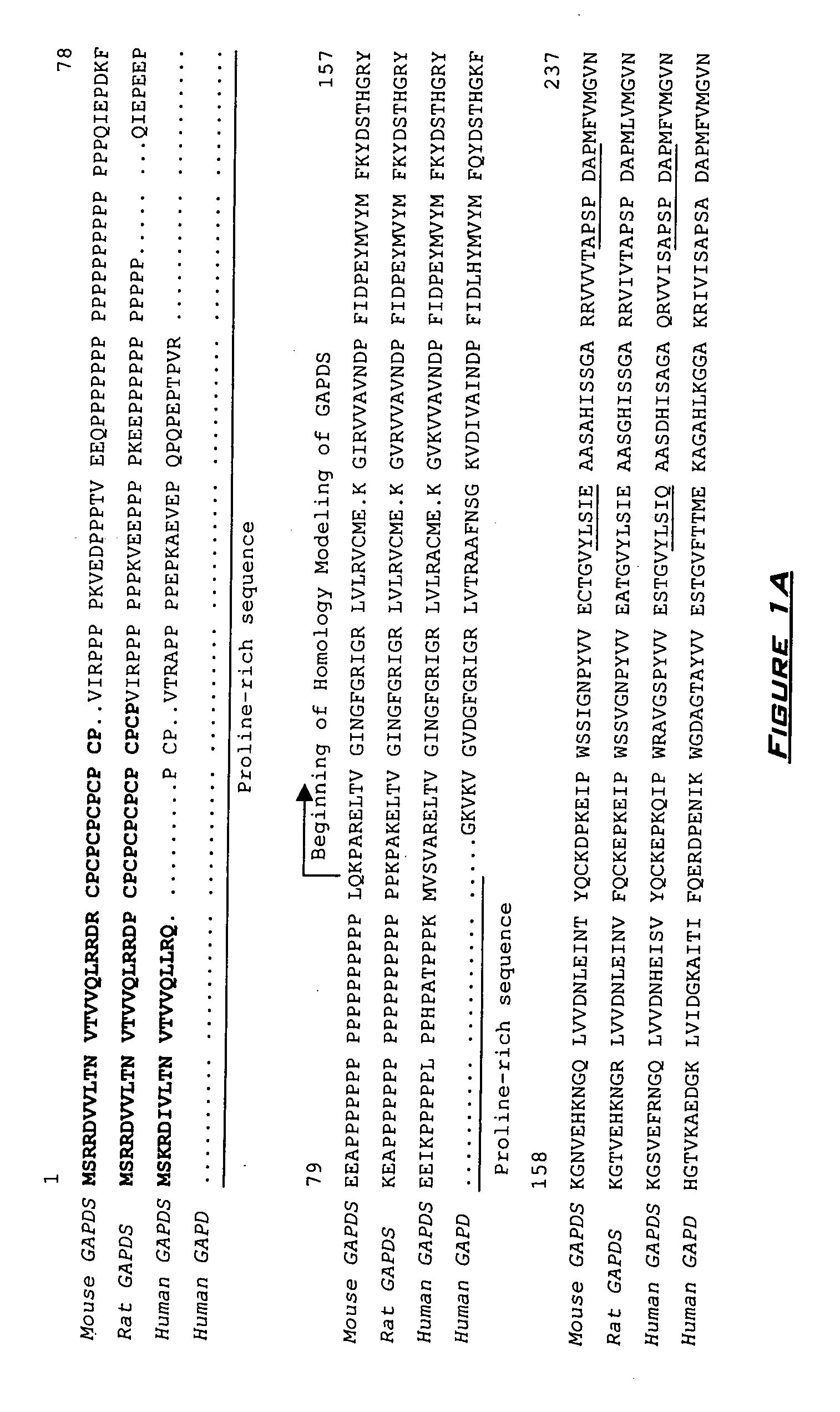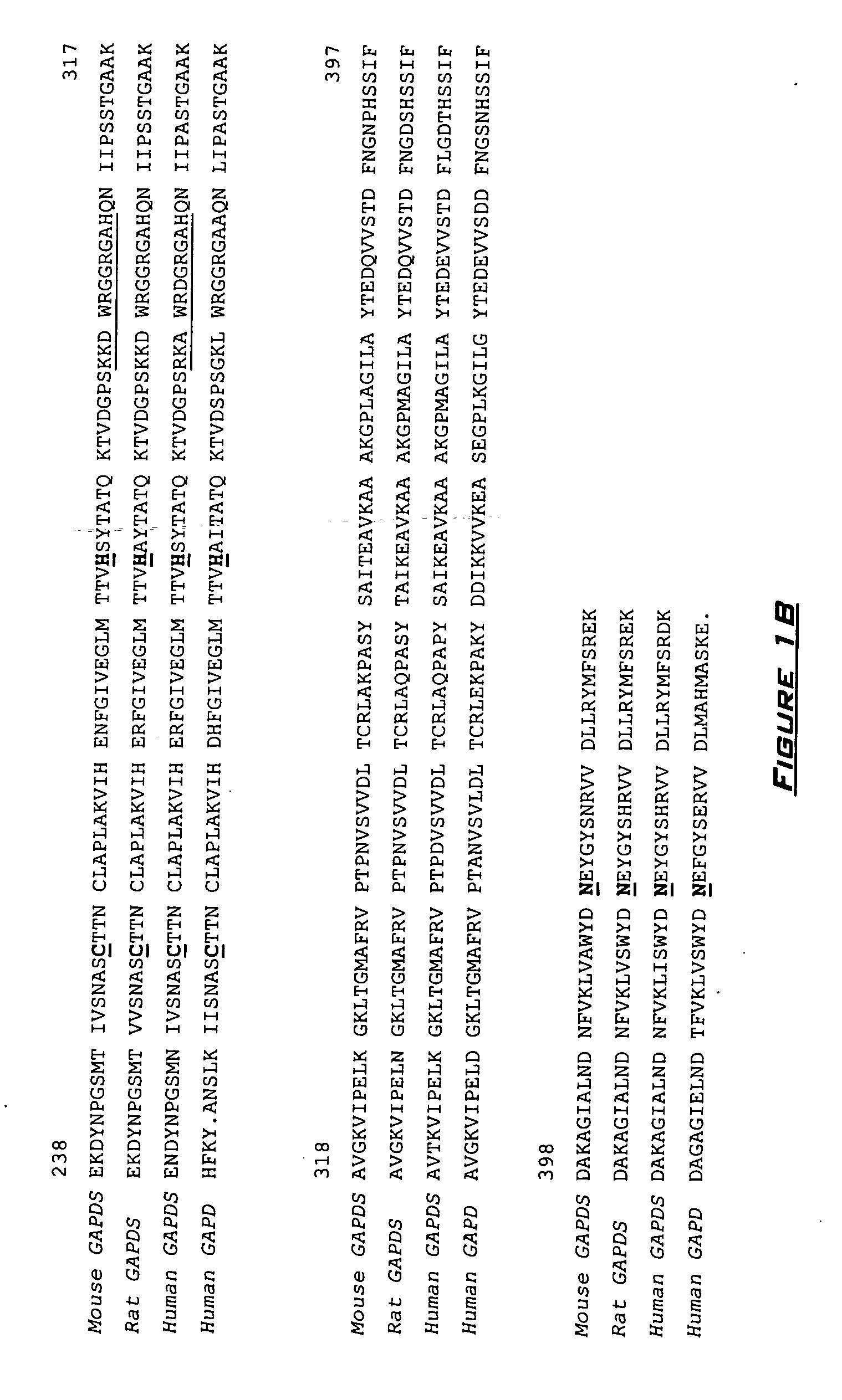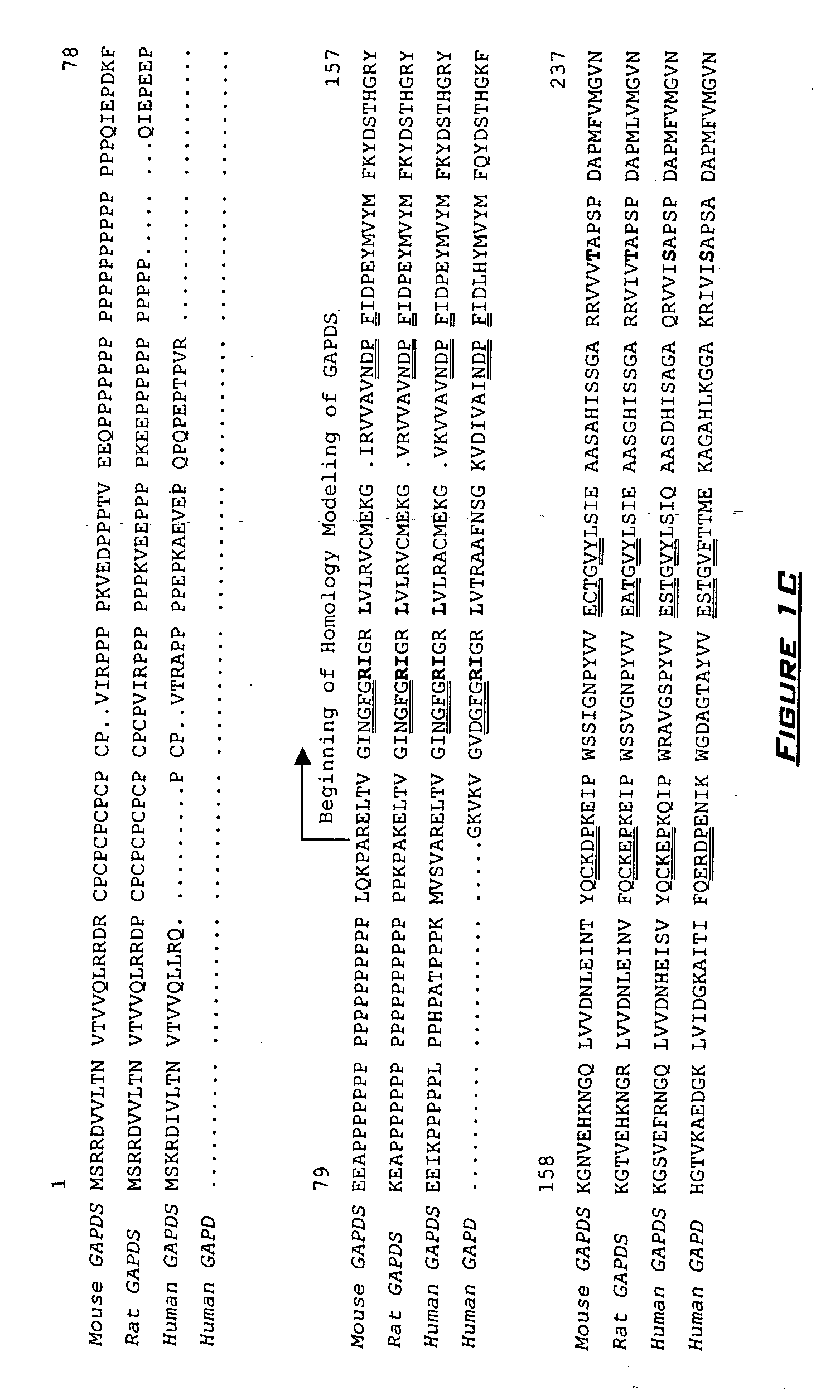Glyceraldehyde 3-phosphate dehydrogenase-S (GAPDHS), a glycolytic anzyme expressed only in male germ cells, is a target for male contraception
a glycolytic anzyme and glycolytic anzyme technology, applied in the field of glyceraldehyde 3phosphate dehydrogenase-s, is a target for male contraception, and can solve the problems of inability to match the rate of population growth with the rate of population growth, affecting the normal biochemical process of contraceptive methods, and limiting male contraception
- Summary
- Abstract
- Description
- Claims
- Application Information
AI Technical Summary
Benefits of technology
Problems solved by technology
Method used
Image
Examples
example 1
Sequence Alignments and Homology Modeling of GAPDHS and Gapdhs Compared to Human Muscle GAPDH
[0256] Alignments for development of the GAPDHS and GAPDHS protein models (FIGS. 1A-1D) were performed using the GCG® WISCONSIN PACKAGES (available from Accelrys, Inc., San Diego, Calif., United States of America) BestFit and Pileup program using the Blosum 62 and Pam 250 matrix algorithms and the Clustal W algorithm. The GAPDHS structural model excluded the N-terminal proline-rich region (residues 1-103) and began with arginine 104 (R104). The structural model developed for GAPDHS also excluded the N-terminal proline-rich region (residues 1-73) and began with arginine 74 (R74). In the alignments on which the models were based, there is one deletion (lysine 26 in GAPDH) and one insertion (proline 243 in GAPDHS; proline 213 in GAPDHS).
[0257] Initial homology models were constructed for GAPDHS and GAPDHS by fitting their amino acid sequences and protein backbone to the coordinates for the hu...
example 2
GAPDHS and Gapdhs Models: Binding Pockets for the Substrate and Cofactor
[0258] Sequence alignments (see FIGS. 1A-1D) identified 48 amino acids identical in mouse Gapdhs and human GAPDHS that are significantly different, in chemical and physical properties, from the residues at corresponding positions in mouse and human GAPDH. See FIGS. 1A-1D. Based on the homology models developed in Example 1, eight of these residues that are located 20 Å or less from the substrate-binding pocket differ sufficiently in chemical and structural properties to affect conformational changes within the substrate-binding domain and / or the NAD cofactor-binding domain. See Table 2. The spatial arrangements of these eight residues in human GAPDH and GAPDHS are shown in FIG. 3. One of the most significant changes in the region of the protein containing the catalytic domain is the replacement of a small, uncharged glycine residue (G192 in human GAPDH; G191 in mouse Gapdh (GENBANK® Accession No. NP—032110)) by...
example 3
GAPDHS and Gapdhs Models: Additional Features of the Active Site
[0262] The GAPDHS and Gapdhs homology models generated in Example 1 were compared systematically with the crystal structure of human GAPDH. The backbones of these three enzymes are superimposed in FIG. 3, and side chains with highly significant differences are highlighted. Structural changes in the size and shape in the substrate-binding pocket and NAD cofactor-binding pocket of GAPDHS and Gapdhs caused by substitutions for residues in GAPDH were examined critically. The root mean square deviation (RMSD; a quantitative measure of the overall difference between the structures) between the Cα backbone structure of the GAPDHS and Gapdhs models and the structure of human GAPDH is 2.385 Å and 2.380 Å respectively, while the RMSD between the Cα backbone structure of the GAPDHS and Gapdhs models is 0.96 Å. This indicates that the modeled structures of GAPDHS and Gapdhs are very similar but differ significantly from the struct...
PUM
| Property | Measurement | Unit |
|---|---|---|
| Temperature | aaaaa | aaaaa |
| Volume | aaaaa | aaaaa |
| Volume | aaaaa | aaaaa |
Abstract
Description
Claims
Application Information
 Login to View More
Login to View More - R&D
- Intellectual Property
- Life Sciences
- Materials
- Tech Scout
- Unparalleled Data Quality
- Higher Quality Content
- 60% Fewer Hallucinations
Browse by: Latest US Patents, China's latest patents, Technical Efficacy Thesaurus, Application Domain, Technology Topic, Popular Technical Reports.
© 2025 PatSnap. All rights reserved.Legal|Privacy policy|Modern Slavery Act Transparency Statement|Sitemap|About US| Contact US: help@patsnap.com



